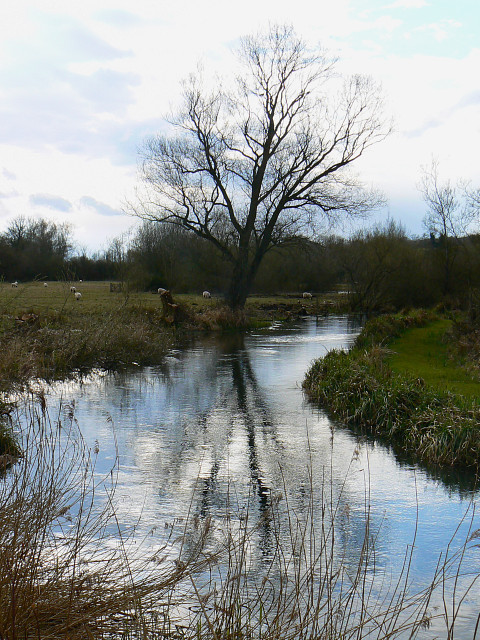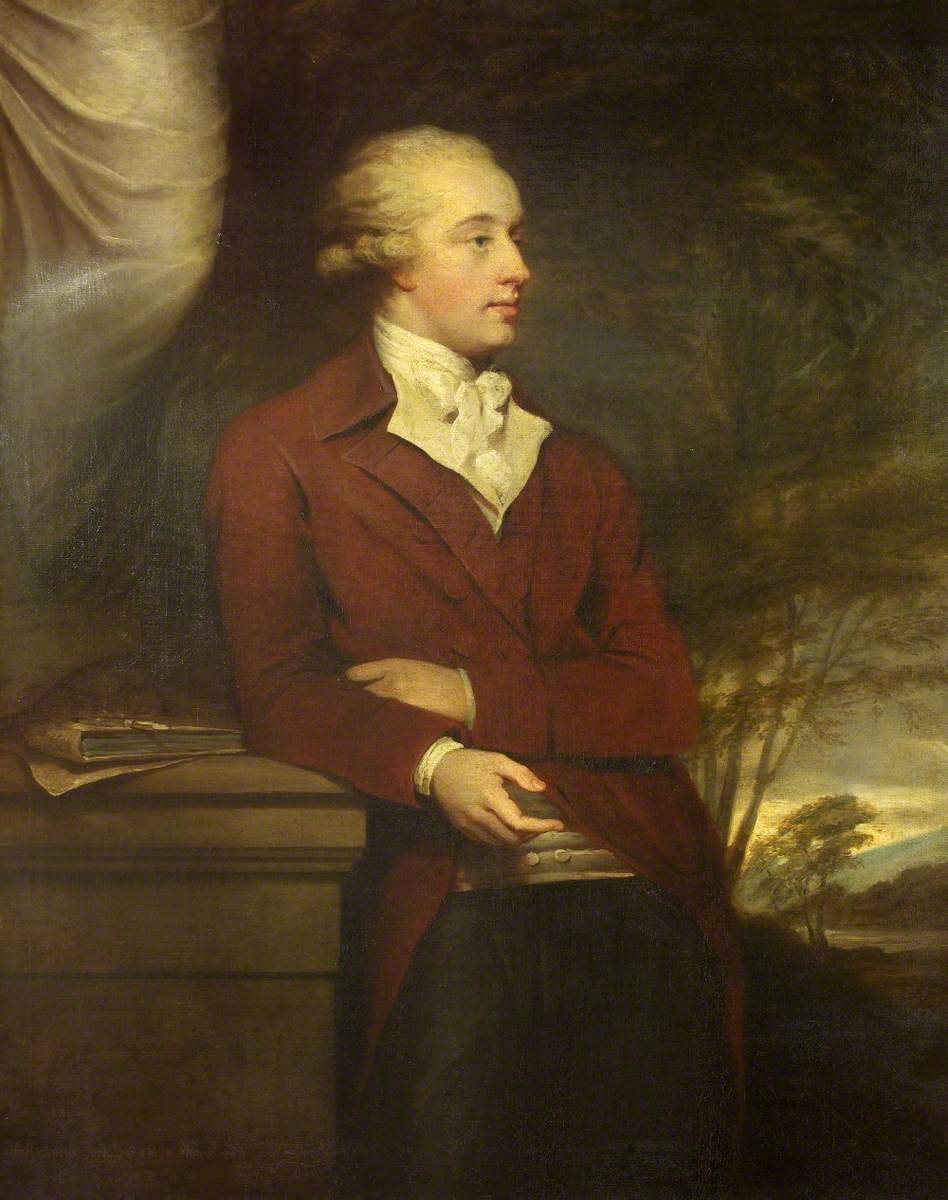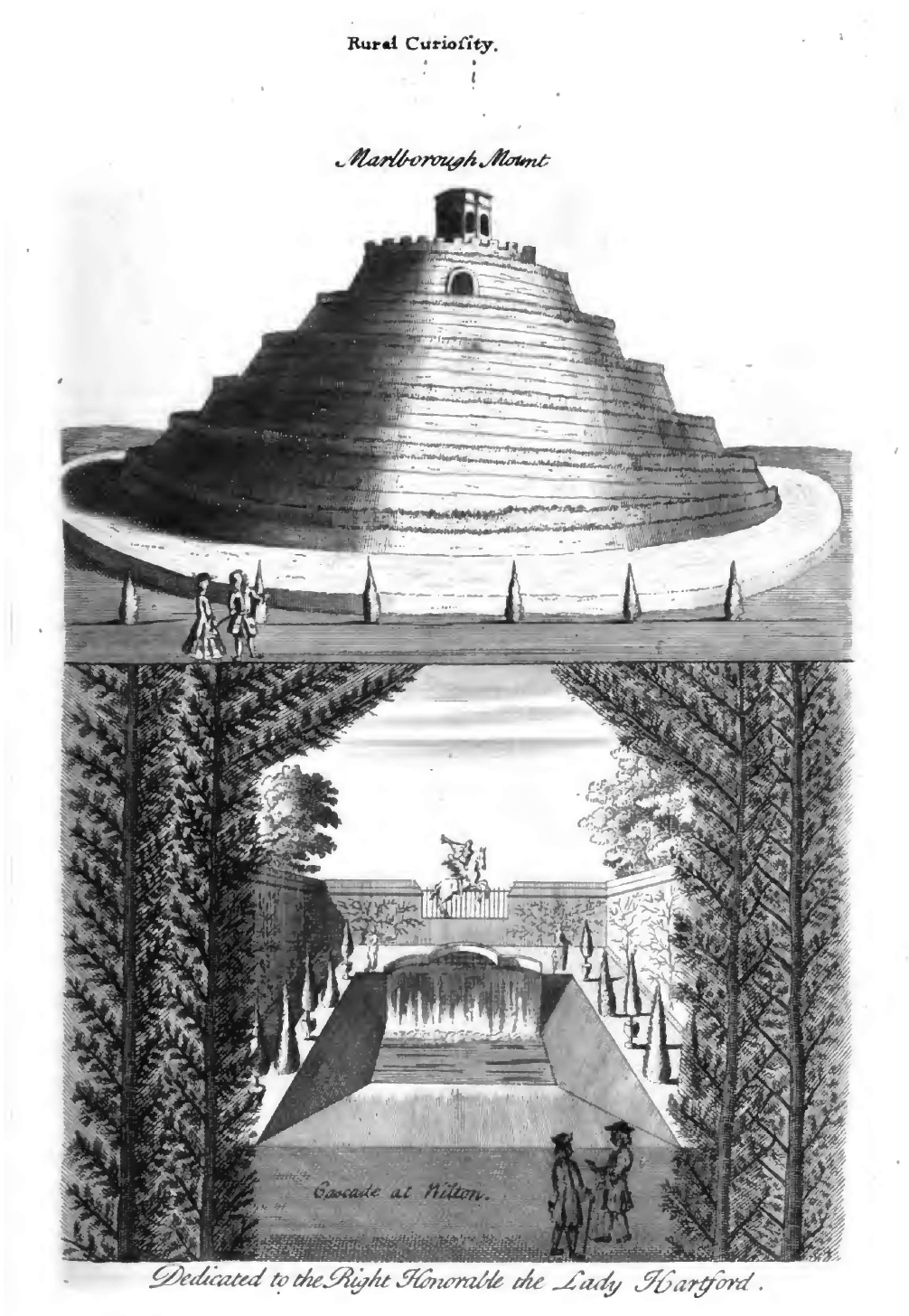|
Marlborough Mound
Marlborough Mound is a Neolithic monument in the town of Marlborough in the English county of Wiltshire. Standing 19 metres tall, it is second only to the nearby Silbury Hill in terms of height for such a monument. Modern study situates the construction date around 2400 BC. It was first listed as a Scheduled Monument in 1951. Marlborough Mound is part of a complex of Neolithic monuments in this area, which includes the Avebury Ring, Silbury Hill, and the West Kennet Long Barrow. It is close to the confluence of the River Kennet and lies within the grounds of Marlborough College. Thus it is on private property, unlike other comparable archaeological sites in Wiltshire. Since construction, the mound has functioned as the motte for a Norman Castle, a garden feature for a stately home, and the site for a water tower within Marlborough College.Marlborough College (2017). ''Marlborough Mound: The Mound Trust'' Marlborough, UK. Today, only the earthworks remain; at its base is ... [...More Info...] [...Related Items...] OR: [Wikipedia] [Google] [Baidu] |
Marlborough, Wiltshire
Marlborough ( , ) is a market town and civil parish in the English county of Wiltshire on the Old Bath Road, the old main road from London to Bath. The town is on the River Kennet, 24 miles (39 km) north of Salisbury and 10 miles (16 km) southeast of Swindon. History The earliest sign of human habitation is the Marlborough Mound, a prehistoric tumulus in the grounds of Marlborough College. Recent radiocarbon dating has found it to date from about 2400 BC. It is of similar age to the larger Silbury Hill about west of the town. Legend has it that the Mound is the burial site of Merlin and that the name of the town comes from Merlin's Barrow. More plausibly, the town's name possibly derives from the medieval term for chalky ground "marl"—thus, "town on chalk". However more recent research, from geographer John Everett-Heath, identifies the original Anglo-Saxon place name as ''Merleberge'', with a derivation from either the personal name of ''Mærle'' combined wi ... [...More Info...] [...Related Items...] OR: [Wikipedia] [Google] [Baidu] |
Ronald Hutton
Ronald Edmund Hutton (born 19 December 1953) is an English historian who specialises in Early Modern Britain, British folklore, pre-Christian religion and Contemporary Paganism. He is a professor at the University of Bristol, has written 14 books and has appeared on British television and radio. He held a fellowship at Magdalen College, Oxford, and is a Commissioner of English Heritage. Born in Ootacamund, India, his family returned to England, and he attended a school in Ilford and became particularly interested in archaeology. He volunteered in a number of excavations until 1976 and visited the country's chambered tombs. He studied history at Pembroke College, Cambridge, and then Magdalen College, Oxford, before he lectured in history at the University of Bristol from 1981. Specialising in Early Modern Britain, he wrote three books on the subject: ''The Royalist War Effort'' (1981), ''The Restoration'' (1985) and ''Charles the Second'' (1990). In the 1990s, he wrote b ... [...More Info...] [...Related Items...] OR: [Wikipedia] [Google] [Baidu] |
Royal Commission On The Historical Monuments Of England
The Royal Commission on the Historical Monuments of England (RCHME) was a government advisory body responsible for documenting buildings and monuments of archaeological, architectural and historical importance in England. It was established in 1908 (shortly after the parallel commissions for Scotland and Wales); and was merged with English Heritage in 1999. The research section and the archive are now part of Historic England. History The Royal Commission was established in 1908, twenty-six years after the passage of the Ancient Monuments Protection Act 1882, which provided the first state protection for ancient monuments in the United Kingdom, and eight years after the passage of the wider-ranging Ancient Monuments Protection Act 1900. Critics, including David Murray in his ''Archaeological Survey of the United Kingdom'' (1896) and Gerard Baldwin Brown in his ''Care of Ancient Monuments'' (1905), had argued that, for the legislation to be effective, a detailed list of significa ... [...More Info...] [...Related Items...] OR: [Wikipedia] [Google] [Baidu] |
Sir Richard Hoare, 2nd Baronet
Sir Richard Colt Hoare, 2nd Baronet FRS (9 December 1758 – 19 May 1838) was an English antiquarian, archaeologist, artist, and traveller of the 18th and 19th centuries, the first major figure in the detailed study of the history of his home county of Wiltshire. Career and personal life Hoare was born in Barnes, Surrey, and was descended from Sir Richard Hoare, Lord Mayor of London, the founder of the family banking business, Hoare's Bank. His parents were Sir Richard Hoare, 1st Baronet (1735–1787) and Anne Hoare (1737–1759). He was educated at preparatory school at Mr. Devis's school, Wandsworth, and afterwards at Samuel Glasse's school at Greenford, and was taught the Classics by the Rev. Joseph Eyre. In 1783 Hoare married Hester, daughter of William Lyttelton, 1st Baron Lyttelton. In 1785 he inherited the large Stourhead estate in Wiltshire from his grandfather, Henry Hoare II, which enabled him to pursue his interests including the archaeological studies for which ... [...More Info...] [...Related Items...] OR: [Wikipedia] [Google] [Baidu] |
Shell Grotto, Marlborough College - Geograph
Shell may refer to: Architecture and design * Shell (structure), a thin structure ** Concrete shell, a thin shell of concrete, usually with no interior columns or exterior buttresses ** Thin-shell structure Science Biology * Seashell, a hard outer layer of a marine animal, found on beaches * Eggshell * Nutshell * Exoskeleton, an external covering of some animals ** Mollusc shell *** Bivalve shell *** Gastropod shell ** Shell, of a brachiopod ** Turtle shell Physics and chemistry * Electron shell or a principal energy level of electrons outside an atom's nucleus * Nuclear shell model, a principal energy level of nucleons within an atom's nucleus * On shell and off shell, quantum field theory concepts depending on whether classical equations of motion are obeyed Mathematics * Spherical shell Organisations * Shell plc, a British multinational oil and gas company ** Shell USA ** Shell Australia ** Shell Canada ** Shell Nigeria * Shell corporation, a type of company that serves as ... [...More Info...] [...Related Items...] OR: [Wikipedia] [Google] [Baidu] |
Frances Seymour, Duchess Of Somerset
Frances Seymour, Duchess of Somerset (''née'' Devereux; 30 September 1599 – 24 April 1674) was an English noblewoman who lived during the reigns of Elizabeth I, James I, Charles I and Charles II. Her father was Robert Devereux, 2nd Earl of Essex, Elizabeth I's favourite who was executed for treason in 1601. She was the second wife of William Seymour, 2nd Duke of Somerset, and the mother of his seven children. Early life Lady Frances Devereux was born on 30 September 1599 at Walsingham House, Seething Lane, London. She was the youngest child of Robert Devereux, 2nd Earl of Essex and his wife, Frances Walsingham. Her paternal grandparents were Walter Devereux, 1st Earl of Essex and Lettice Knollys, and her maternal grandparents were Sir Francis Walsingham, Queen Elizabeth's trusted spymaster, and Ursula St. Barbe. At the time of Frances's birth, her father, who was a former favourite of Queen Elizabeth and Lord Lieutenant of Ireland, was under arrest for treasonous beha ... [...More Info...] [...Related Items...] OR: [Wikipedia] [Google] [Baidu] |
Jane Seymour
Jane Seymour (c. 150824 October 1537) was Queen of England as the third wife of King Henry VIII of England from their marriage on 30 May 1536 until her death the next year. She became queen following the execution of Henry's second wife, Anne Boleyn. She died of postnatal complications less than two weeks after the birth of her only child, the future King Edward VI. She was the only wife of Henry to receive a queen's funeral or to be buried beside him in St George's Chapel, Windsor Castle. Early life Jane, the daughter of Sir John Seymour and Margery Wentworth, was most likely born at Wulfhall, Wiltshire, although West Bower Manor in Somerset has also been suggested. Her birth date is not recorded; various accounts use anywhere from 1504 to 1509, but it is generally estimated around 1508. Through her maternal grandfather, she was a descendant of King Edward III's son Lionel of Antwerp, 1st Duke of Clarence. Because of this, she and King Henry VIII were fifth cousins. She ... [...More Info...] [...Related Items...] OR: [Wikipedia] [Google] [Baidu] |
Edward VI Of England
Edward VI (12 October 1537 – 6 July 1553) was King of England and King of Ireland, Ireland from 28 January 1547 until his death in 1553. He was crowned on 20 February 1547 at the age of nine. Edward was the son of Henry VIII and Jane Seymour and the first English monarch to be raised as a Protestant. During his reign, the realm was governed by a regent, regency council because he never reached maturity. The council was first led by his uncle Edward Seymour, 1st Duke of Somerset (1547–1549), and then by John Dudley, 1st Earl of Warwick (1550–1553), who from 1551 was Duke of Northumberland. Edward's reign was marked by economic problems and social unrest that in 1549 erupted into riot and rebellion. An expensive war with Kingdom of Scotland, Scotland, at first successful, ended with military withdrawal from Scotland and Boulogne-sur-Mer in exchange for peace. The transformation of the Church of England into a recognisably Protestant body also occurred under Edward, who took ... [...More Info...] [...Related Items...] OR: [Wikipedia] [Google] [Baidu] |
Henry III Of England
Henry III (1 October 1207 – 16 November 1272), also known as Henry of Winchester, was King of England, Lord of Ireland, and Duke of Aquitaine from 1216 until his death in 1272. The son of King John and Isabella of Angoulême, Henry assumed the throne when he was only nine in the middle of the First Barons' War. Cardinal Guala Bicchieri declared the war against the rebel barons to be a religious crusade and Henry's forces, led by William Marshal, defeated the rebels at the battles of Lincoln and Sandwich in 1217. Henry promised to abide by the Great Charter of 1225, a later version of the 1215 ''Magna Carta'', which limited royal power and protected the rights of the major barons. His early rule was dominated first by Hubert de Burgh and then Peter des Roches, who re-established royal authority after the war. In 1230, the King attempted to reconquer the provinces of France that had once belonged to his father, but the invasion was a debacle. A revolt led by Will ... [...More Info...] [...Related Items...] OR: [Wikipedia] [Google] [Baidu] |
Marlborough Castle
Marlborough Castle, locally known and recorded in historical documents as ''The Mound'', was an 11th-century royal castle located in the civil parish of Marlborough, Wiltshire, Marlborough, a market town in the English county of Wiltshire, on the Old Bath Road, the old main road from London to Bath, Somerset, Bath (). The tumulus, barrow on which the fortification was built, perhaps the "barrow of Maerla", seems to be a prehistoric earthwork which formed the motte of the Norman Marlborough Castle. 'The borough of Marlborough', ''A History of the County of Wiltshire'' 12: Ramsbury and Selkley hundreds; the borough of Marlborough (1983:199–229) accessed 8 May 2010. It survives as a tree-covere ... [...More Info...] [...Related Items...] OR: [Wikipedia] [Google] [Baidu] |
Savernake Forest
Savernake Forest stands on a Cretaceous chalk plateau between Marlborough and Great Bedwyn in Wiltshire, England. Its area is approximately . Most of the forest lies within the civil parish of Savernake. It is privately owned by the Earl of Cardigan and his son Viscount Savernake, and is administered by trustees. Since 1939 the timber of the forest has been managed by Forestry England on a 999-year lease. The private status of Savernake Forest is maintained by shutting the forest to the public one day per year. Geography Savernake's landform is rolling downland, dissected by both dry and wet valleys. The valleys within the forest, of which there are four, are all dry, and the presence of Cretaceous deposits of Clay-with-Flints creates the damp, heavy soils suited to dense cover of oak and beech. There are patches of poor drainage and wet soil. History First mention of a woodland ''"Safernoc"'' was made in AD 934 in the written records of the King Athelstan, but the ... [...More Info...] [...Related Items...] OR: [Wikipedia] [Google] [Baidu] |
Æthelric II
Æthelric (died ) was the second to last medieval Bishop of Selsey in England before the see was moved to Chichester Chichester () is a cathedral city and civil parish in West Sussex, England.OS Explorer map 120: Chichester, South Harting and Selsey Scale: 1:25 000. Publisher:Ordnance Survey – Southampton B2 edition. Publishing Date:2009. It is the only .... Consecration, Consecrated a bishop in 1058, he was deposed in 1070 for unknown reasons and then imprisoned by King William I of England. He was considered one of the best legal experts of his time, and was even brought from his prison to attend the trial on Penenden Heath where he gave testimony about English law before the Norman Conquest of England. Early life Æthelric was a monk at Canterbury Cathedral, Christ Church Priory at Canterbury prior to his becoming a bishop.Barlow ''Edward the Confessor'' p. 198 Several historians opine that he might have been the same as the Æthelric who was a monk of Canterbury ... [...More Info...] [...Related Items...] OR: [Wikipedia] [Google] [Baidu] |

.jpg)


%2C_Attributed_to_Gilbert_Jackson_(1622_-_1640).jpg)



